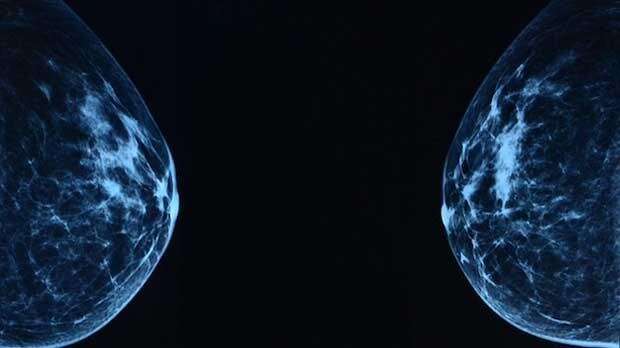
A new study funded by Cancer Research UK has mapped out some of the earliest changes that occur in seemingly healthy breast tissue long before any tumors appear, which could have significant implications for the early detection of breast cancer.
The paper, published today in Nature Communications, has discovered that before becoming cancerous, breast cells with the BRCA1 gene mutation undergo changes similar to those normally seen during pregnancy.
The research, led by Karsten Bach and Dr. Sara Pensa at the University of Cambridge, set out to develop a method to detect the early changes occurring in BRCA1-affected breast cells, indicating that they are progressing towards breast cancer.
“Over the last decades scientists have cataloged the mutations present in breast cancers. What we don’t know, however, is how these mutations impact the cells in the healthy breast. As this is challenging to study in humans, we have turned to powerful mouse models where we can analyze the tissue in a time-window just before the tumor appears,” says Karsten Bach, co-author on the study and Ph.D. student at the Department of Pharmacology and Cancer Research UK Cambridge Institute.
What is a BRCA1 mutation?
Some people have inherited gene faults that increase their risk of developing particular types of cancer. A fault in either BRCA genes (BRCA1 or BRCA2), significantly increases a person’s risk of developing breast cancer at a younger age, as well as their risk of developing ovarian cancer.
It’s estimated that between three and five in every 1,000 people carry a fault in BRCA1 or BRCA2, though some population groups have markedly higher prevalence.
In 2013, it was widely reported that Angelina Jolie made the decision to have surgery to reduce her chances of breast cancer. Many women who discover they carry a faulty version of the BRCA1 gene choose to have surgery to remove their breast tissue, an operation known as a mastectomy.
Although specialists estimate that having a faulty version of a BRCA gene means a woman has an estimated 70% chance of developing breast cancer by age 80, not all women who have BRCA1 mutations will go on to develop cancer.
So for some, this life-changing surgery may be unnecessary, or could at least be delayed until early warning signs are spotted.
An unexpected find
The team analyzed the breast (mammary) tissue of 15 mice carrying the BRCA1 mutation as they aged, looking for changes in the tissue before the mice developed tumors.
Incredibly, the scientists found certain cells that are normally only present when an animal is pregnant and starting to produce milk growing in the BRCA1 mice, despite none of the animals being pregnant.
This could mean that the BRCA1 mutation triggers the breast tissue to mimic pregnancy, before eventually turning cancerous.
“We thought we’d been given the wrong mice at first,” said Bach. “Then we realized that having the BRCA1 mutation seemed to cause the cells in their breast tissue to behave as if the mouse was pregnant.”
The team reasoned that the presence of a BRCA1 mutation may trigger pathways that are usually only activated during pregnancy to be switched on in a type of stem cell called luminal progenitor in the breast.
When these pathways are activated, messages instruct the cells to turn into alveolar cells, which make up the chambers in the breast where milk-production takes place during late pregnancy.
Although BRCA1-driven triple negative breast cancer is known to arise from these stem cells, how they develop as a result of the mutation has been poorly understood.
Dr. Sara Pensa, co-author and senior research associate at the Department of Pharmacology and Wellcome-MRC Cambridge Stem Cell Institute said that one of the mysteries surrounding BRCA gene mutations is how they increase a woman’s risk of cancer so dramatically in the breast tissue, as opposed to say the kidneys or lung. “It seems that certain pathways in breast cells that are usually switched on by hormones during pregnancy are triggered by BRCA1 mutations and cause the cells to grow out of control.”
And as the team discovered, these changes happened very early on, before any tumors were detected. “So we reasoned that the markers of these cellular changes could be used to monitor people who we know are at risk for breast cancer and potentially inform on when to undergo, if at all, a mastectomy,” said Pensa.
What could this mean for women with a BRCA1 mutation?
Next, the team analyzed breast cells from 12 women with the BRCA1 mutation who had undergone a preventative mastectomy.
To the surprise of the researchers, only four out of the 12 women had detectable levels of these markers of early steps of tumor initiation, suggesting that the majority of the women were still at low risk of developing tumors when they had surgery.
Although the work is still in its early stages and larger clinical trials will be needed, the researchers hope to build on their findings and develop a blood test to detect the early changes occurring in BRCA1 breast cells.
Source: Read Full Article
